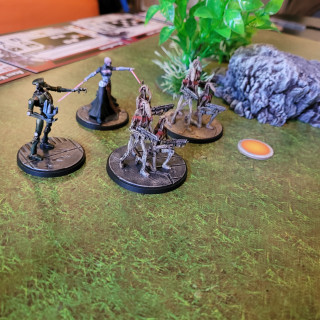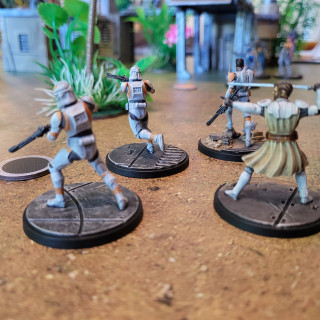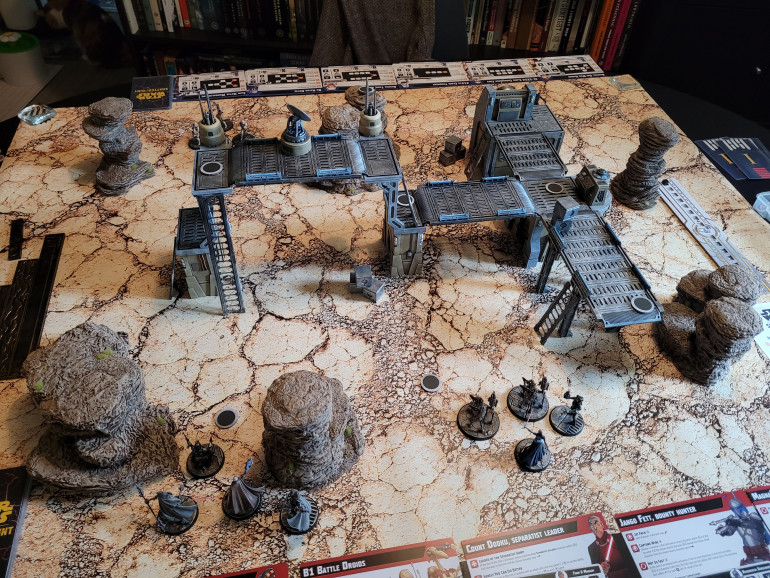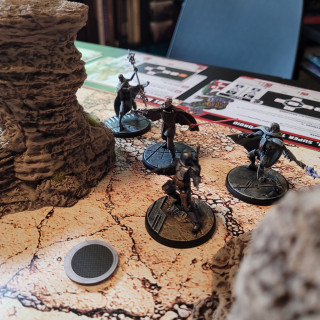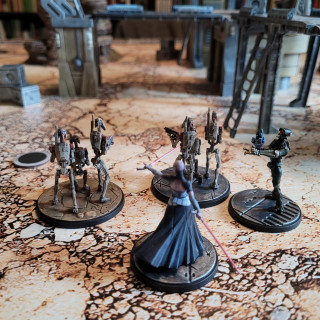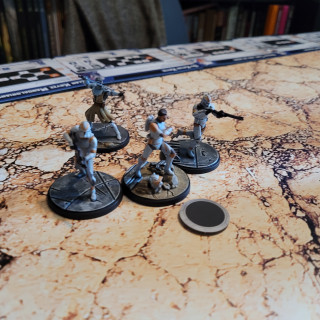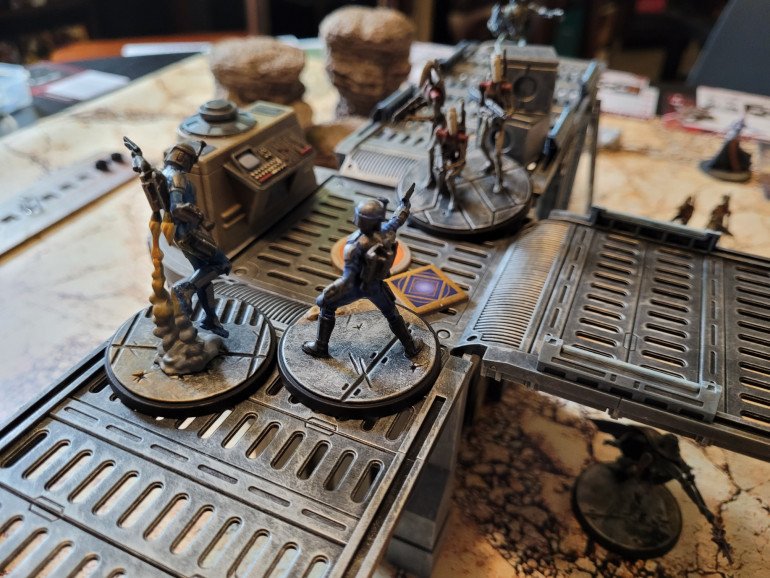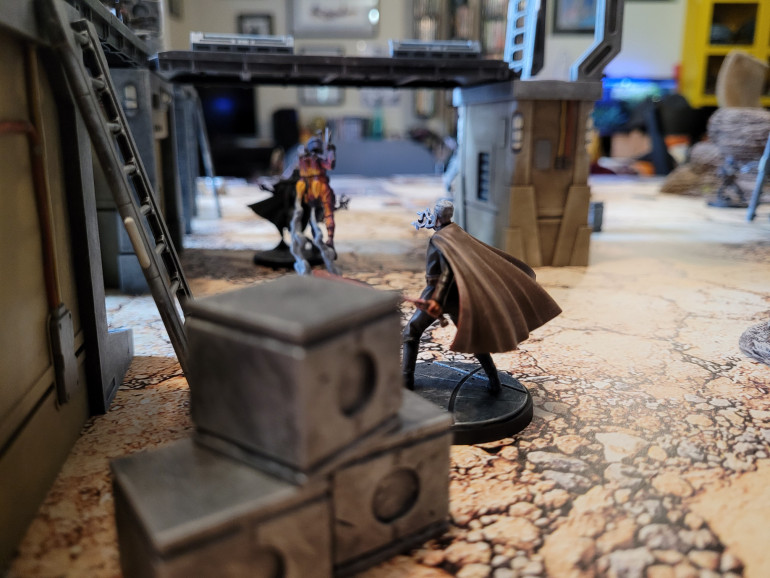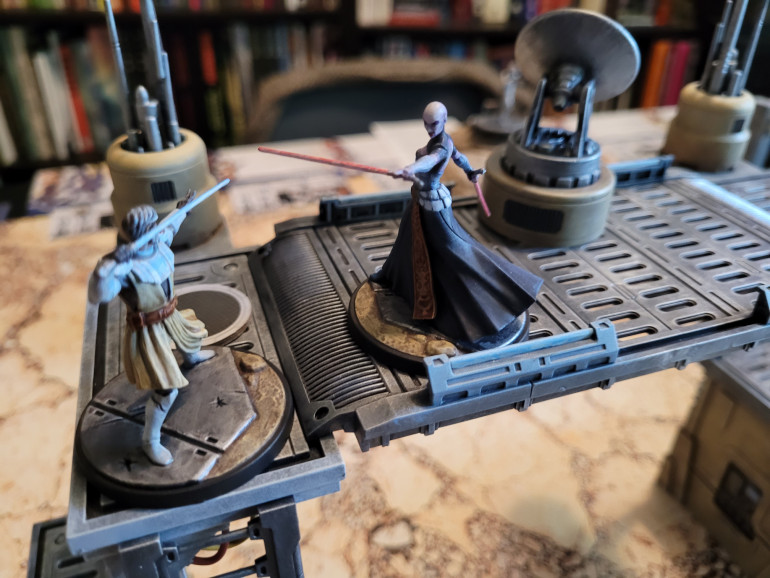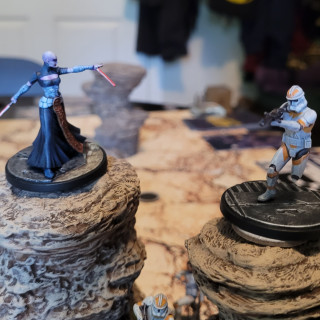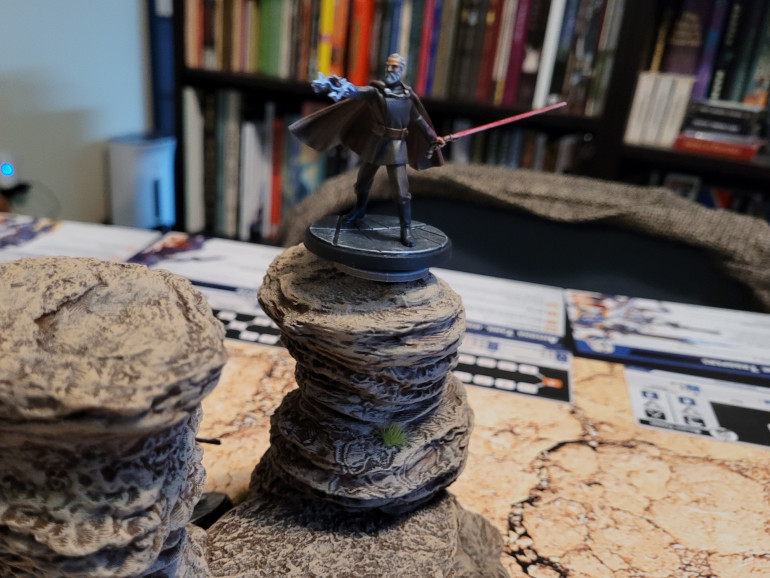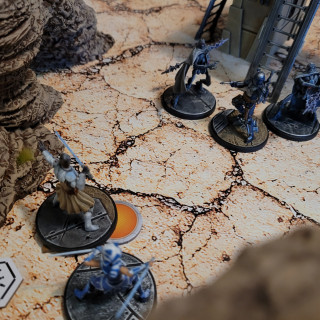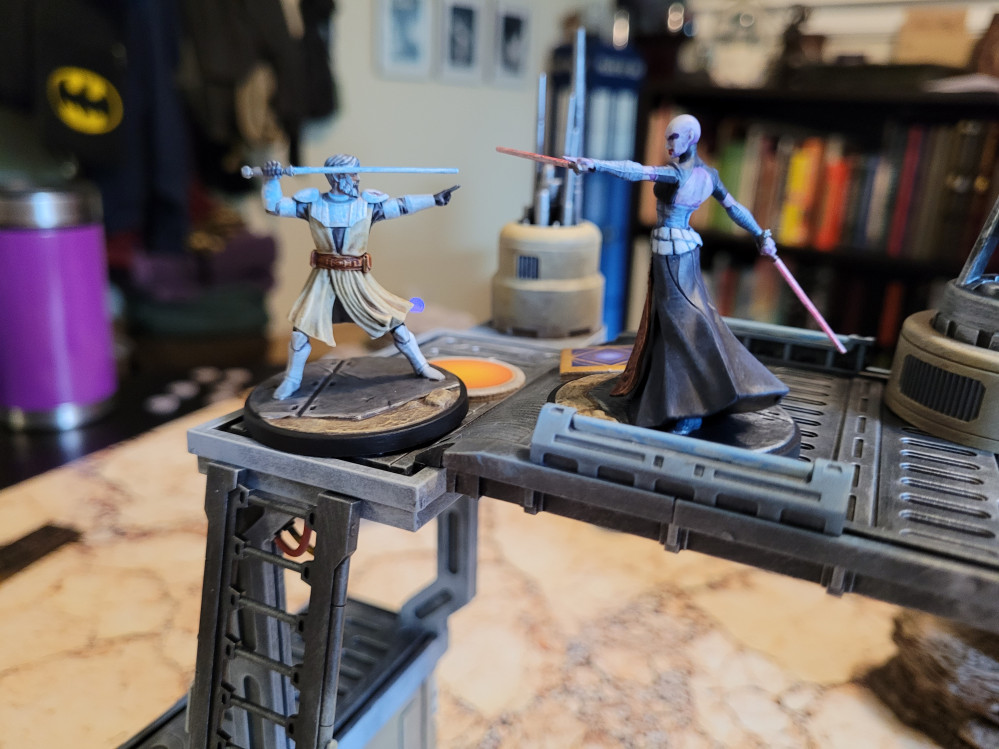
First game of Star Wars: Shatterpoint
Recommendations: 5
About the Project
After several weeks of assembling and painting, my opponent and I finally got a free weekend to get Shatterpoint to the table.
Related Game: Star Wars: Shatterpoint
Related Company: Atomic Mass Games
Related Genre: Science Fiction
This Project is Completed
Welcome to the Jungle
We decided to set our first game in a jungle, reasoning that the trees and plants would fill out the table and provide some cover (also, I haven’t had much of a chance to use all this jungle terrain I put together earlier this year). We set up and played for a few hours, but ran short on time and had to quit early.
Welcome to the Desert
The next day, we wanted to try again while the rules were still fresh in our heads. This time we opted for a desert setup, since the high, narrow desert rocks would make better use of Shatterpoint’s elevation rules. Side note: I bought this mat and terrain primarily to use for Gaslands, but I’ve also used it for Doctor Who, 7TV Apocalypse and now this. It goes to show that a good terrain library is money well spent.
We used the same strike teams as on the previous day. I’m fielding Assaj Ventress, Kalani, the B1 Battle Droids, Count Dooku, Jango Fett, and the Magnaguards. My opponent is commanding Obi-Wan, Commander Cody, the 212th Clone Troopers, Ahsoka Tano, Bo-Katan, and the Mandalorian Commandos. We’re using the squads right out of the box so we can get to grips with the rules and basic strategy before we fuss with trying to piece together our own combos and synergies.
In case you’re unfamiliar with how Shatterpoint works, it is focused primarily on area control, with evenly spaced objective tokens that become active and inactive at specific intervals throughout the game. The game is divided into three struggles, with the objectives resetting after each. Since the position of the active objective points changes periodically, the game really favors a lot of movement rather than setting up in a specific position and staying there. Unit activations are done via a deck of cards: you have one card per unit, plus one wild card. Each turn you draw to see who gets to activate, then your opponent does the same.
The First Struggle
We spent the bulk of the game on the first struggle. We’re deployed on opposite sides of the board, and we don’t know which objectives will be active until after we’ve deployed. I got lucky and was able to secure one of the objectives right away. My opponent, on the other hand, had to scramble a bit as her closest objective was on top of an elevated bit of terrain. Most of our fighting was over the middle row of objectives, with my B1 Battle droids engaged in a pitched battle with Bo-Katan and the Mandalorians over one of them.
Meanwhile, I sent Dooku and his Magnaguards in to try to disrupt the Clone Troopers, but he didn’t have much luck dislodging them from their position on the rocks, and was soon distracted by Ahsoka.
Obi-Wan managed to get to the highest point on the board and secure the objective there, scoring it for several turns before I could get anyone up there to stop him. Eventually I managed to move Assaj Ventress into position, but it was too little, too late. My opponent won the first struggle.
The Second Struggle
At the start of the second struggle, the active objectives change, and also reduce in number (from 5 to 3). Additionally, in the second and third struggles one of the objectives is designated the priority objective, and is worth double the points to its controller. And, just to make things really interesting, the location of the priority objective is rolled randomly each round, so its position changes from turn to turn (but can occasionally stay in the same place).
This led to our game’s standout cinematic moment. The objective that Obi-Wan and Ventress had been fighting over during the first struggle went dark, so there wasn’t any reason for either of them to be there any longer. Luckily I was able to activate Ventress on my next turn, and she was able to Dash (a short move) off the edge of the gantry, landing at ground level, and then use a Force leap to jump up onto the rock formation where there was an active objective. She took a swipe at the Clone Trooper there, hoping to score a shove in order to push him off the elevated rock. That didn’t work, but she had one last ace up her sleeve, a special ability that allowed her to push the Clone Trooper away and take control of the objective.
Eventually Commander Cody and his Clones managed to retake the rock, but were in turn dislodged by Count Dooku. Meanwhile, Obi-Wan jumped down from the gantry to engage with Jango Fett over one of the other objective points. Kalani, a droid commander who can move other Battle Droids during his turn, was able to order the Magnaguards to move in to help, but Obi-Wan managed to retain control of the objective long enough for help to arrive in the form of Ahsoka, who moved in to help after assisting the Mandalorians to take out the B1 Battle Droids, our game’s only actual casualty.
In spite of Ventress, Dooku, and Jango Fett’s best efforts, my opponent was able to score more objective points and win the second struggle. Since the first player to win two struggles is the winner, this meant a crushing defeat for the forces of evil.
A few observations about the game
The card-based activation system made the game really interesting. There aren’t a lot of games that do this (Mythic Battles: Pantheon is the only one that immediately comes to mind), and it leads to a different approach to your decision making: instead of asking “what should I do now?” at the start of your turn, you are asking “what should this character do now?” which makes the action seem more immediate and urgent.
Similarly, the I-go you-go turn structure means you get more opportunities to react to what your opponent is doing, and also makes the game seem like a fast-paced, action-packed battle like the ones we frequently see in the Clone Wars animated show.
One other thing I found especially interesting was that each of us only reshuffled our activation deck twice during the entire game. This means that each unit only activated 2 or 3 times during the game. It doesn’t seem like a lot, but even with only two actions per activation, each unit is able to do a lot on their turn.
I can honestly say that after our first full game, Shatterpoint feels a lot more fluid and reactive than any of the other skirmish games I’ve played, with a lot of opportunities for cinematic moments. We very much enjoyed the game and will definitely be trying to play regularly.









































